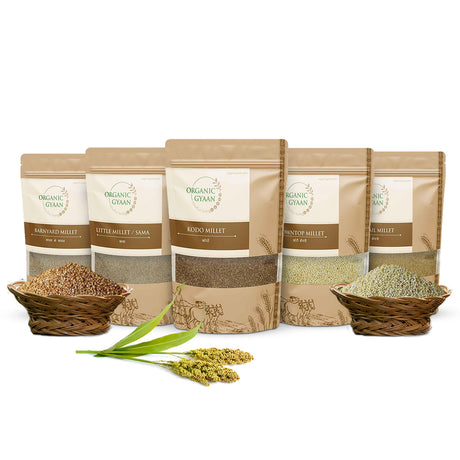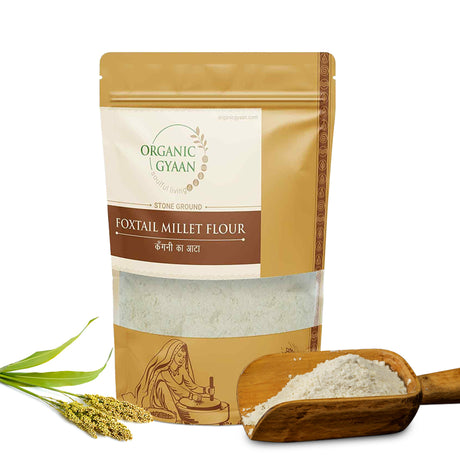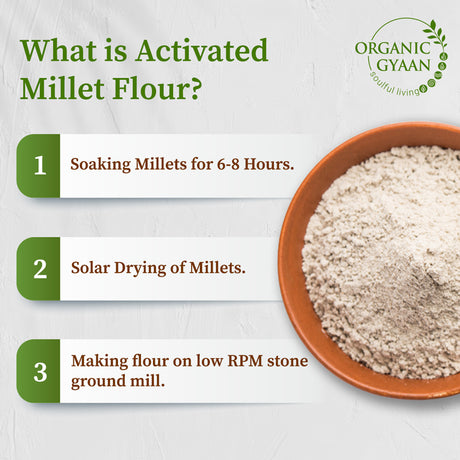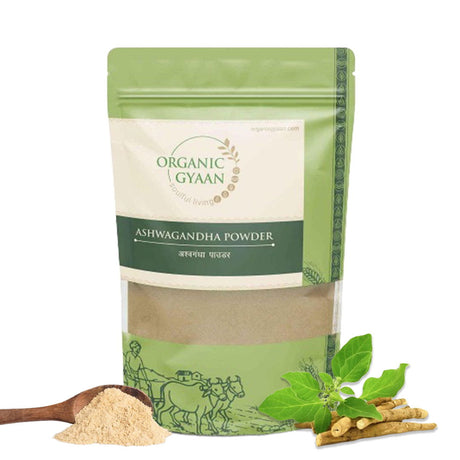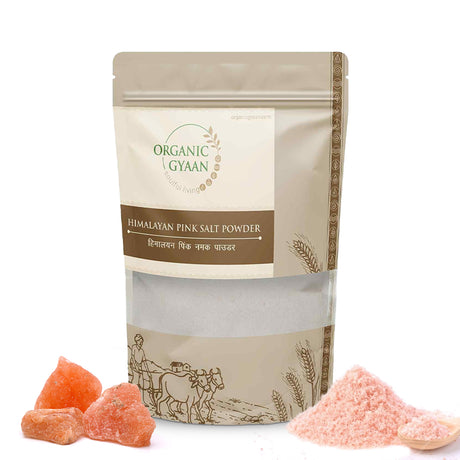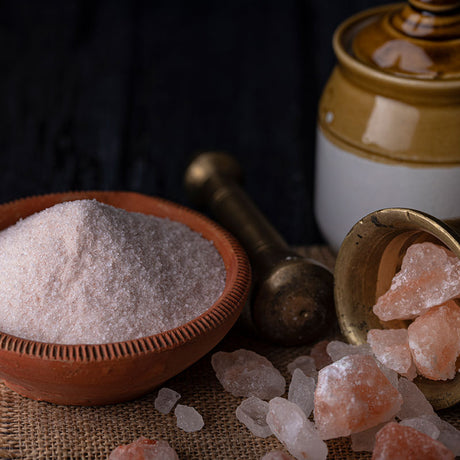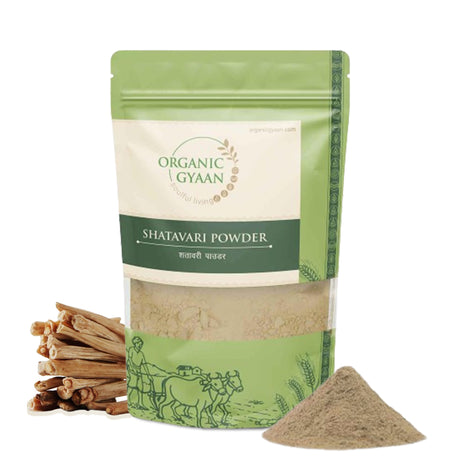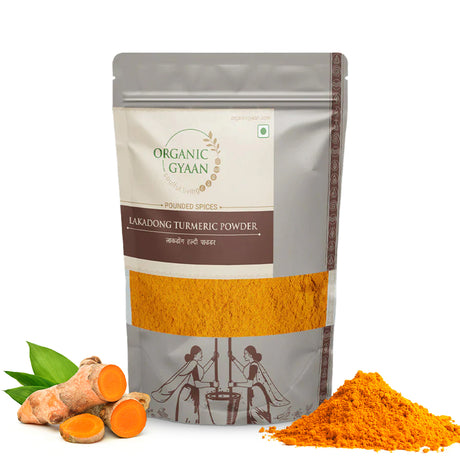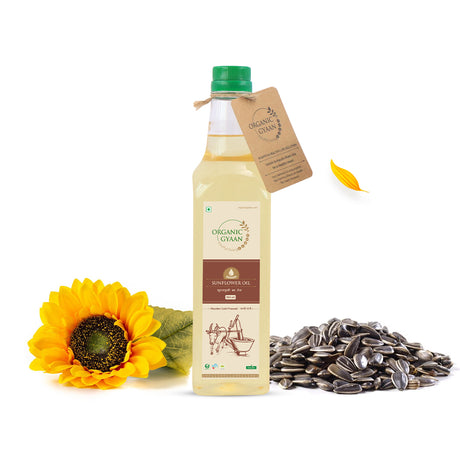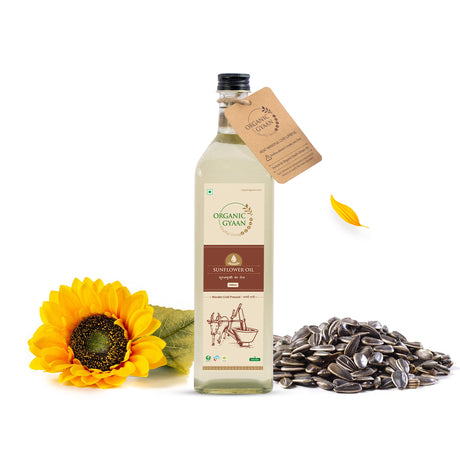क्या आप जानते हैं कि कई भारतीय रसोई में इस्तेमाल होने वाली सूजी का इस्तेमाल न केवल उपमा और हलवा जैसे स्वादिष्ट व्यंजन बनाने के लिए किया जाता है, बल्कि यह कई स्वास्थ्य लाभ भी प्रदान करती है? लेकिन सूजी वास्तव में क्या है? सूजी पारंपरिक रूप से ड्यूरम गेहूं से बना एक मोटा आटा है, जिसमें प्रोटीन और ग्लूटेन की मात्रा अधिक होती है। हालाँकि, सूजी को रागी, बाजरा और ज्वार जैसे विभिन्न प्रकार के बाजरे से भी बनाया जा सकता है, जो और भी अधिक पोषण संबंधी लाभ प्रदान करता है।
इस ब्लॉग में हम जानेंगे कि सूजी क्या है, इसका पोषण मूल्य क्या है, गेहूं और बाजरे की सूजी के क्या फायदे हैं और आप इन्हें अपने खाने में कैसे इस्तेमाल कर सकते हैं। चाहे आप पहले से ही सूजी से परिचित हों या अभी-अभी इसे सीख रहे हों, जानें कि कैसे ये अलग-अलग तरह की सूजी आपके खाने में सेहतमंद हो सकती हैं।
सूजी के प्रकार
जब हम सूजी की बात करते हैं, तो ज़्यादातर लोग गेहूं की सूजी के बारे में सोचते हैं, जो सबसे आम प्रकार है। हालाँकि, सूजी को अलग-अलग अनाज से बनाया जा सकता है, जिनमें से प्रत्येक अद्वितीय स्वाद और स्वास्थ्य लाभ प्रदान करता है। यहाँ सूजी के कुछ लोकप्रिय प्रकार दिए गए हैं:
1. गेहूं सूजी :
यह सबसे ज़्यादा इस्तेमाल की जाने वाली सूजी है, जो ड्यूरम गेहूँ से बनाई जाती है। इसमें प्रोटीन और ग्लूटेन की मात्रा अधिक होती है, जो इसे पास्ता, ब्रेड और उपमा और हलवा जैसे कई भारतीय व्यंजन बनाने के लिए आदर्श बनाती है। गेहूँ की सूजी अपनी खुरदरी बनावट और भरपूर स्वाद के लिए जानी जाती है, जो इसे कई व्यंजनों में एक बहुमुखी सामग्री बनाती है।
2. चावल सूजी :
चावल से बनी इस तरह की सूजी का इस्तेमाल अक्सर दक्षिण भारतीय व्यंजनों में इडली और डोसा जैसे व्यंजन बनाने के लिए किया जाता है । यह स्वाभाविक रूप से ग्लूटेन-मुक्त है, जो इसे ग्लूटेन असहिष्णुता या सीलिएक रोग वाले लोगों के लिए एक अच्छा विकल्प बनाता है। चावल की सूजी बनावट में चिकनी होती है और इसका स्वाद हल्का होता है जो विभिन्न सामग्रियों के साथ अच्छी तरह से मिल जाता है।
3. मकई सूजी:
कॉर्नमील के नाम से भी जानी जाने वाली इस तरह की सूजी को पिसे हुए मकई से बनाया जाता है। इसका इस्तेमाल आमतौर पर बेकिंग और खाना पकाने में कॉर्नब्रेड, मफिन और टॉर्टिला बनाने के लिए किया जाता है। मकई की सूजी का स्वाद थोड़ा मीठा और बनावट में मोटा होता है, जो व्यंजनों में एक अनोखा स्वाद और कुरकुरापन जोड़ता है।
4. बाजरा सूजी:
जबकि पारंपरिक सूजी ड्यूरम गेहूं से बनाई जाती है, वहीं विभिन्न प्रकार के बाजरे से भी कई किस्में बनाई जाती हैं। बाजरे की सूजी अपने अनोखे स्वाद और अतिरिक्त स्वास्थ्य लाभों के कारण तेजी से लोकप्रिय हो रही है। रागी, बाजरा और ज्वार जैसे बाजरे ग्लूटेन-मुक्त विकल्प प्रदान करते हैं जो फाइबर, विटामिन और खनिजों से भरपूर होते हैं। यहाँ बाजरे की सूजी के कुछ सामान्य प्रकार दिए गए हैं:
- रागी सूजी : रागी सूजी कैल्शियम और आयरन से भरपूर होती है, जो इसे हड्डियों के स्वास्थ्य और एनीमिया को रोकने के लिए बेहतरीन बनाती है। इसमें फाइबर की मात्रा भी अधिक होती है, जो पाचन में सहायता करती है और रक्त शर्करा के स्तर को नियंत्रित करने में मदद करती है।
- बाजरा सूजी : बाजरा सूजी प्रोटीन, फाइबर और मैग्नीशियम जैसे पोषक तत्वों से भरपूर होती है। यह हृदय स्वास्थ्य के लिए फायदेमंद है और इसके कम ग्लाइसेमिक इंडेक्स के कारण मधुमेह को नियंत्रित करने में मदद कर सकता है।
- ज्वार सूजी : ज्वार सूजी ग्लूटेन-मुक्त और एंटीऑक्सीडेंट से भरपूर होती है, जो इसे ग्लूटेन असहिष्णुता वाले लोगों के लिए एक अच्छा विकल्प बनाती है। इसमें फाइबर भी अधिक होता है, जो पाचन स्वास्थ्य का समर्थन करता है और वजन प्रबंधन में सहायता करता है।
- फॉक्सटेल बाजरा सूजी : फॉक्सटेल बाजरा सूजी प्रोटीन और आहार फाइबर का एक अच्छा स्रोत है। यह स्वस्थ रक्त शर्करा के स्तर को बनाए रखने में मदद करता है और समग्र स्वास्थ्य का समर्थन करता है।
बाजरे की इस तरह की सूजी कई तरह के स्वास्थ्य लाभ प्रदान करती है और पारंपरिक सूजी की तरह ही इसे कई तरह के व्यंजनों में इस्तेमाल किया जा सकता है। यह उन लोगों के लिए एक बढ़िया विकल्प है जो अपने पोषक तत्वों के सेवन को बढ़ाते हुए कुछ नया आज़माना चाहते हैं।
सूजी के पोषण संबंधी तथ्य
सूजी के फायदों को समझने के लिए, इसके पोषण मूल्य के बारे में जानना मददगार होगा। यहाँ सूजी के पोषण मूल्य का एक संक्षिप्त विवरण दिया गया है, जो दर्शाता है कि यह कितना पोषक तत्वों से भरपूर है:
|
पुष्टिकर |
मात्रा प्रति 100 ग्राम |
|
कैलोरी |
360 |
|
प्रोटीन |
12.7 ग्राम |
|
कार्बोहाइड्रेट |
72.8 ग्राम |
|
रेशा |
3.9 ग्राम |
|
मोटा |
1.05 ग्राम |
|
कैल्शियम |
17 मिलीग्राम |
|
लोहा |
1.23 मिलीग्राम |
|
मैगनीशियम |
47 मिलीग्राम |
|
पोटेशियम |
186 मिलीग्राम |
सूजी प्रोटीन और कार्बोहाइड्रेट का एक अच्छा स्रोत है, जो इसे ऊर्जा बढ़ाने वाला एक बेहतरीन भोजन बनाता है। इसमें वसा भी कम होती है और इसमें आयरन और मैग्नीशियम जैसे आवश्यक खनिज होते हैं, जो अच्छे स्वास्थ्य को बनाए रखने के लिए महत्वपूर्ण हैं।
सूजी के फायदे
अब जब हमें सूजी के पोषण और बाजरे की सूजी के विभिन्न प्रकारों की बुनियादी समझ हो गई है, तो आइए सूजी के विभिन्न लाभों के बारे में जानें और जानें कि आपको इसे अपने आहार में क्यों शामिल करना चाहिए।
1. प्रोटीन से भरपूर
सूजी के सबसे महत्वपूर्ण लाभों में से एक इसकी उच्च प्रोटीन सामग्री है। सूजी के आटे में प्रति 100 ग्राम लगभग 12.7 ग्राम प्रोटीन होता है, जो इसे पौधे-आधारित प्रोटीन का एक उत्कृष्ट स्रोत बनाता है। प्रोटीन ऊतकों के निर्माण और मरम्मत, एंजाइम और हार्मोन का उत्पादन करने और समग्र विकास और विकास का समर्थन करने के लिए आवश्यक है।
अपने आहार में सूजी को शामिल करने से आपकी दैनिक प्रोटीन की ज़रूरतें पूरी हो सकती हैं, खासकर अगर आप शाकाहारी या वीगन हैं। यह आपके भोजन में एक मूल्यवान अतिरिक्त हो सकता है, जो मांसपेशियों के द्रव्यमान और समग्र स्वास्थ्य को बनाए रखने के लिए आवश्यक आवश्यक अमीनो एसिड का एक अच्छा संतुलन प्रदान करता है।
2. ऊर्जा का अच्छा स्रोत
गेहूं की सूजी जटिल कार्बोहाइड्रेट का एक बेहतरीन स्रोत है, जो पूरे दिन ऊर्जा का एक स्थिर स्रोत प्रदान करता है। सरल कार्बोहाइड्रेट के विपरीत जो रक्त शर्करा के स्तर में तेज़ी से वृद्धि और गिरावट का कारण बन सकते हैं, सूजी में जटिल कार्बोहाइड्रेट धीरे-धीरे पचते हैं, जिससे निरंतर ऊर्जा मिलती है। सूजी खाने से आपको ऊर्जावान और सक्रिय रहने में मदद मिल सकती है, जिससे यह नाश्ते या दोपहर के भोजन के लिए एक आदर्श भोजन विकल्प बन जाता है।
3. पाचन स्वास्थ्य का समर्थन करता है
सूजी का एक और महत्वपूर्ण लाभ इसकी फाइबर सामग्री है। प्रति 100 ग्राम सूजी में लगभग 3.9 ग्राम फाइबर होता है, जो स्वस्थ पाचन तंत्र को बनाए रखने के लिए आवश्यक है। फाइबर मल त्याग को विनियमित करने, कब्ज को रोकने और आंत में लाभकारी बैक्टीरिया के विकास को बढ़ावा देने में मदद करता है। अपने आहार में सूजी को शामिल करने से पाचन स्वास्थ्य को बेहतर बनाने और समग्र आंत के कामकाज को बेहतर बनाने में मदद मिल सकती है।
4. रक्त शर्करा के स्तर को नियंत्रित करने में मदद करता है
सूजी रक्त शर्करा के स्तर को नियंत्रित करने में भी मदद कर सकती है, जिससे यह मधुमेह वाले लोगों के लिए एक अच्छा विकल्प बन जाता है। सूजी का कम ग्लाइसेमिक इंडेक्स (जीआई) का मतलब है कि यह रक्त शर्करा के स्तर में तेजी से वृद्धि नहीं करता है।
इसके अलावा, सूजी में मौजूद फाइबर रक्तप्रवाह में शर्करा के अवशोषण को धीमा कर देता है, जिससे रक्त शर्करा में अचानक वृद्धि को रोकने में मदद मिलती है। संतुलित आहार के हिस्से के रूप में सूजी खाने से रक्त शर्करा के स्तर को प्रबंधित करने और ऊर्जा का एक स्थिर स्रोत प्रदान करने में मदद मिल सकती है।
5. आयरन से भरपूर
सूजी के कम ज्ञात लाभों में से एक है इसमें मौजूद आयरन। आयरन लाल रक्त कोशिकाओं के उत्पादन और पूरे शरीर में ऑक्सीजन के परिवहन के लिए आवश्यक है। आयरन की कमी से एनीमिया हो सकता है, जिससे थकान, कमज़ोरी और अन्य स्वास्थ्य संबंधी समस्याएं होती हैं।
गेहूं की सूजी अच्छी मात्रा में आयरन प्रदान करती है, जिससे यह आहार के लिए एक बढ़िया अतिरिक्त है, खासकर उन लोगों के लिए जिनमें आयरन की कमी का खतरा अधिक हो सकता है, जैसे शाकाहारी, वेगन या प्रसव आयु की महिलाएं।
6. मैग्नीशियम से भरपूर
सूजी के फायदों में इसकी भरपूर मात्रा में खनिज तत्व भी शामिल हैं। सूजी मैग्नीशियम का एक अच्छा स्रोत है, जो मांसपेशियों के कार्य, तंत्रिका कार्य और हड्डियों के स्वास्थ्य में महत्वपूर्ण भूमिका निभाता है । मैग्नीशियम शरीर में सैकड़ों जैव रासायनिक प्रतिक्रियाओं के लिए आवश्यक है, जिसमें प्रोटीन संश्लेषण, मांसपेशियों और तंत्रिका कार्य और रक्त शर्करा नियंत्रण शामिल हैं। अपने आहार में सूजी को शामिल करने से आपको ये महत्वपूर्ण खनिज प्राप्त करने और अपने समग्र स्वास्थ्य का समर्थन करने में मदद मिल सकती है।
7. वसा में कम
सूजी के फायदों में से एक यह है कि इसमें वसा कम होती है, जो इसे वजन कम करने या वसा का सेवन कम करने वालों के लिए एक स्वस्थ विकल्प बनाता है। सूजी में प्रति 100 ग्राम में केवल 1.05 ग्राम वसा होती है, जो इसे कम वसा वाले आहार पर रहने वालों के लिए एक बढ़िया विकल्प बनाती है। अपने भोजन में सूजी को शामिल करने से आप अतिरिक्त वसा के सेवन की चिंता किए बिना स्वादिष्ट व्यंजनों का आनंद ले सकते हैं।
8. बहुमुखी और उपयोग में आसान
सूजी के कई उपयोग हैं, जो इसे रसोई में एक बहुमुखी सामग्री बनाते हैं। इसका उपयोग कई तरह के व्यंजन बनाने में किया जा सकता है, जैसे उपमा जैसे नमकीन नाश्ते से लेकर हलवा जैसी मीठी मिठाइयाँ।
सूजी के आटे का इस्तेमाल बेकिंग में भी किया जाता है, जिससे यह ब्रेड, केक और कुकीज़ के लिए एक बेहतरीन विकल्प बन जाता है। अपने खाना पकाने में सूजी का उपयोग करके आप कई तरह के स्वादिष्ट और पौष्टिक व्यंजन बना सकते हैं जिनका पूरा परिवार आनंद ले सकता है।
अपने आहार में सूजी का उपयोग कैसे करें
अब जब आप सूजी के लाभों को जान गए हैं, तो इसे अपने दैनिक आहार में शामिल करने के कुछ सरल तरीके यहां दिए गए हैं:
- नाश्ता : अपने दिन की शुरुआत एक कटोरी सूजी दलिया या उपमा से करें। ये व्यंजन न केवल स्वादिष्ट होते हैं बल्कि आपको सुबह भर ऊर्जा भी देते हैं।
- बेकिंग : ब्रेड, केक और कुकीज़ बनाने के लिए बेकिंग में सूजी के आटे का उपयोग करें। यह बेक्ड माल में एक अनूठी बनावट और स्वाद जोड़ता है।
- मिठाइयाँ : सूजी का उपयोग करके हलवा या केसरी जैसी पारंपरिक भारतीय मिठाइयाँ बनाएँ। ये मिठाइयाँ बनाना आसान है और सूजी के लाभों का आनंद लेने का एक शानदार तरीका है।
- पास्ता और नूडल्स : घर पर पास्ता या नूडल्स बनाने के लिए गेहूं की सूजी का इस्तेमाल करें। यह एक चबाने योग्य बनावट और भरपूर स्वाद प्रदान करता है जो स्टोर से खरीदा गया पास्ता नहीं दे सकता।
- कोटिंग : कटलेट और फ्रिटर्स जैसे तले हुए खाद्य पदार्थों पर कोटिंग के रूप में सूजी का उपयोग करें। यह आपके व्यंजनों को कुरकुरा बनाता है और स्वादिष्ट क्रंच जोड़ता है।
निष्कर्ष
सूजी के कई फायदे हैं, जो इसे किसी भी आहार में शामिल करने के लिए एक मूल्यवान घटक बनाते हैं। प्रोटीन और फाइबर प्रदान करने से लेकर पाचन स्वास्थ्य को बेहतर बनाने और रक्त शर्करा के स्तर को नियंत्रित करने तक, सूजी कई तरह के स्वास्थ्य लाभ प्रदान करती है जो आपके समग्र स्वास्थ्य को बेहतर बना सकती है। चाहे आप इसे पारंपरिक भारतीय व्यंजनों में शामिल करें या बेकिंग में इस्तेमाल करें, सूजी एक बहुमुखी और पौष्टिक सामग्री है जो आपके स्वास्थ्य लक्ष्यों को प्राप्त करने में आपकी मदद कर सकती है।
क्या आप सूजी के स्वास्थ्य लाभों का आनंद लेने के लिए तैयार हैं? आज ही अपने दैनिक आहार में इस बहुमुखी और पौष्टिक घटक को शामिल करना शुरू करें और देखें कि यह आपके स्वास्थ्य को कैसे बेहतर बना सकता है। चाहे आप सूजी का उपयोग इसके प्रोटीन तत्व के लिए कर रहे हों या पाचन स्वास्थ्य को बेहतर बनाने के लिए, हर रसोई में इस घटक के लिए जगह है।


